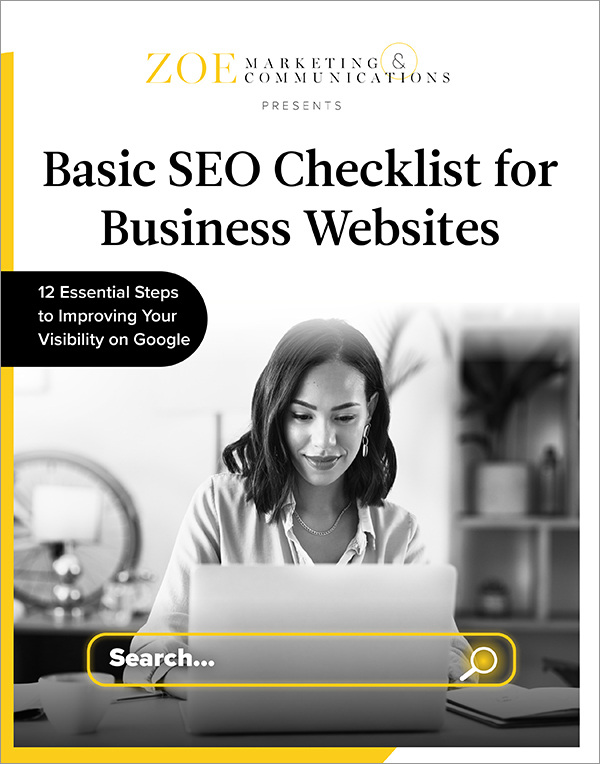
Download Your Basic SEO Checklist
Unlock the fundamentals of search engine optimization. This checklist provides step-by-step guidance to improve your site’s search ranking.
Topics:

Google search results are today’s “Main Street.” Just like a well-placed sign or eye-catching storefront, your digital presence needs to grab attention — fast.
But competition is fierce. 87% of consumers use Google to evaluate local businesses. If you’re not showing up in searches, your competitors are.
That’s where local SEO (search engine optimization) comes in. At Zoe Marketing & Communications, we’ve helped businesses strengthen their local visibility since 2020. Below are 10 top strategies to improve rankings and turn web searchers into customers.
Unlock the fundamentals of search engine optimization. This checklist provides step-by-step guidance to improve your site’s search ranking.
Your Google Business Profile is often the first thing people see. Keep it updated with:
This direct line to customers boosts visibility and credibility.
Use location-specific keywords that match search behavior.
Instead of “best coffee shop,” try “best coffee shop in downtown Ann Arbor.” Tools like Google’s Keyword Planner help identify high-traffic local terms.
60% of Google searches happen on mobile. A slow or clunky site loses visitors fast.
Content that answers real customer questions boosts your SEO. Consider:
Ensure your business name, address and phone (NAP) is consistent across:
These citations help search engines trust your business.
Backlinks from credible, local websites improve rankings. Seek out:
More people speak their searches. Adjust your content for natural phrasing:
Google rewards fast, user-friendly sites. Key improvements include:
Use Google Analytics to monitor:
Refine your strategy based on what’s working.
Targeted Google and social ads put your business in front of the right audience. For instance, a music school could target parents of kids ages 7-12 within a 10-mile radius using:
This ensures you’re reaching engaged, local prospects.
Local SEO makes your business more discoverable and builds trust with potential customers. These 10 strategies — from Google Business Profile updates to geotargeted ads — help drive real results.
Need expert guidance? Talk to us. Zoe Marketing & Communications creates custom SEO solutions for businesses like yours.
Want to fine-tune your strategy? These articles will help:

Unlock the fundamentals of search engine optimization. This checklist provides step-by-step guidance to improve your site’s search ranking.
As Zoe Marketing & Communications’ content manager, Kim Kovelle brings over 20 years of writing and editing experience in metro Detroit. She has strong roots in community journalism and a knack for making complicated topics make more sense.
Topics:
